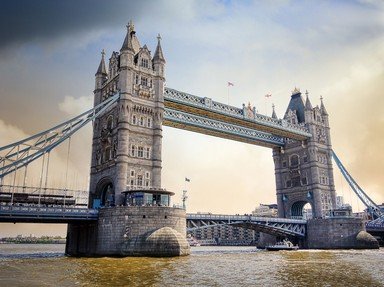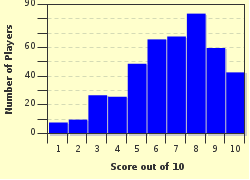Quiz Answer Key and Fun Facts
1. The area around Torbay, in Devon, is described as The English Riviera. Which of the listed towns is not included in that description?
2. Travelling westward from Devon, we enter the county of Cornwall. There is a feature of this county, which in the ancient Cornish language is called Carrack Looz en Cooz. What is this place called in English?
3. Rounding the tip of Cornwall at Land's End, we head back to Devon passing the north Cornish resort towns of Newquay and Padstow. Off the north coast of Devon is a tiny island where the Atlantic Ocean meets the Bristol Channel. Famous for its bird life, where are we?
4. Across the Bristol Channel from Devon and its northern neighbour Somerset, is Wales. The part we are going to visit, The Gower Peninsular, was the first part of Britain to be designated as an Area of Outstanding Natural Beauty in 1956.
5. Leaving The Gower behind us we travel around Carmarthen Bay, past the picturesque sea side town of Tenby, with its pretty little bay and 13th Century castle, and we arrive at what is claimed to be the second largest natural harbour in the World. Where has our journey brought us?
6. Moving north along the Pembrokeshire coast, most of which is a National Park, we arrive at the United Kingdom's smallest city. Where are we now?
7. In north Wales there is a structure called Pont Grog y Borth. It connects two places that are just a few hundred feet apart across a stretch of water. What is the English name for the water that this structure crosses?
______ Strait
8. We leave Wales, and arrive back in England. We pass Llandudno, and Colwyn Bay. We cross the mouths of the rivers Dee and Mersey, and arrive in Lancashire at the resort often called Britain's Coney Island. Where have we landed?
9. We're in the far northwest of England. An area famous for its lakes, and the highest point in England, Scafell Pike. Where we have arrived is just 60 miles south of the border with Scotland. Originally in the county of Lancashire, it is now in Cumbria. Which town have we arrived at?
10. Traveling north we finally, after moving down the Solway Firth, reach Scotland. We have arrived at the town of Gretna Green. On this side of Britain it is the first town that you reach when you leave England. For many years, Gretna has been famous for a particular ceremony. Which one?
Source: Author
romeomikegolf
This quiz was reviewed by FunTrivia editor
gtho4 before going online.
Any errors found in FunTrivia content are routinely corrected through our feedback system.

